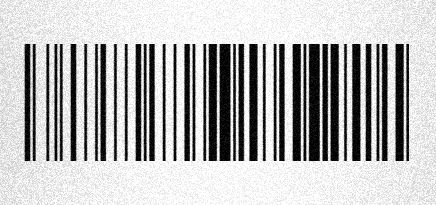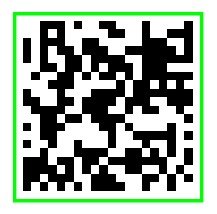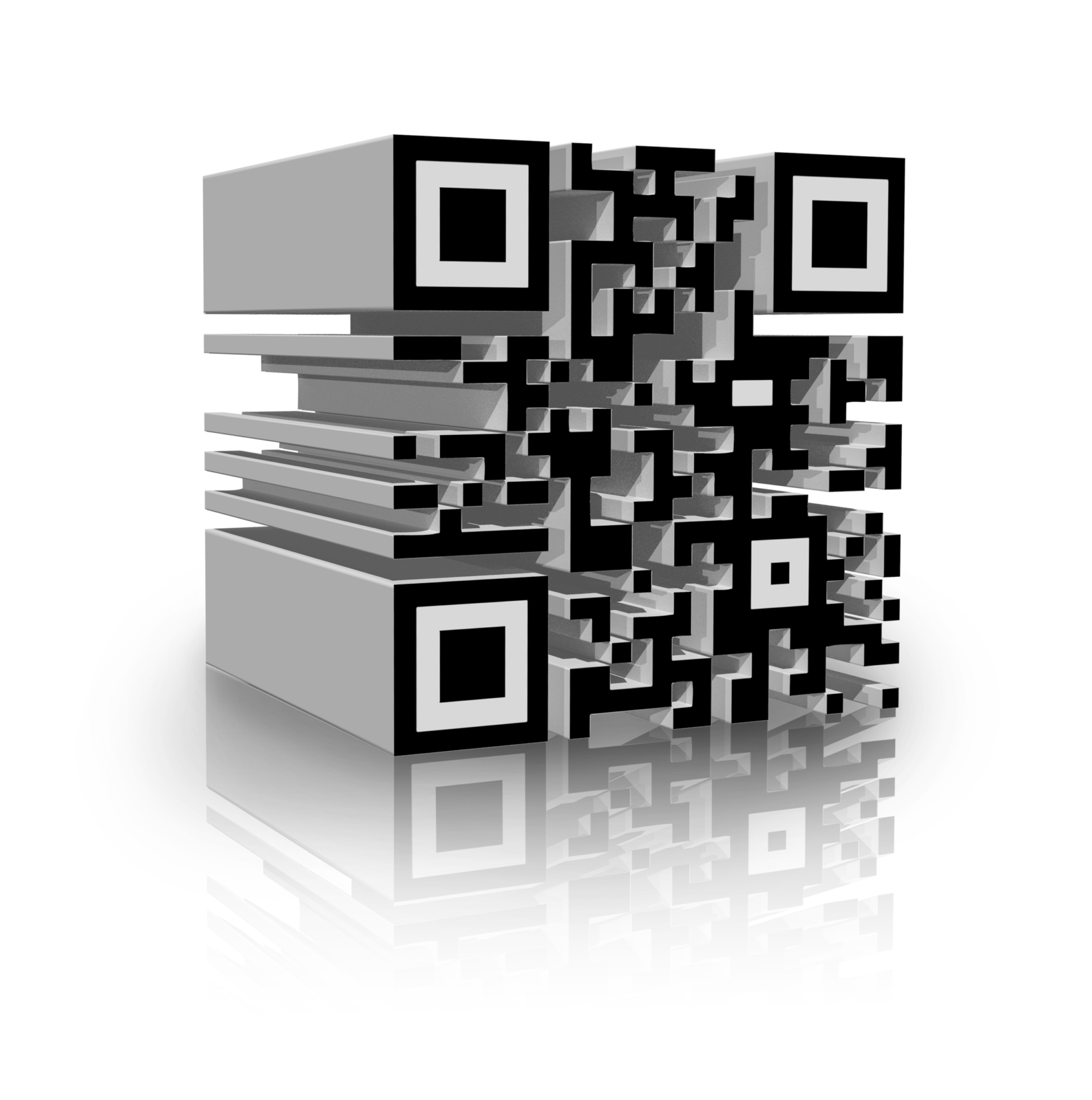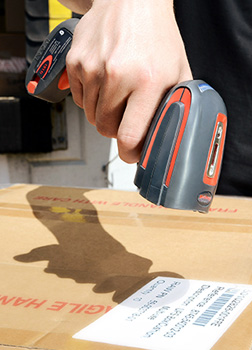Barcode labels are used to identify products and assets have been used since the mid-1970’s. Over time, as technology has improved, so have barcode and scanning technology. From 1D to 2D, tracking stock and inventory has become faster and far more efficient. The amount of data in a single barcode has become more complex in a smaller footprint.
Naturally, scanning and printing equipment has also upgraded along the way. Scanning equipment has become more durable, can scan at greater distances, and can even scan at different angles. Barcode printers are available to facilities for inhouse printing.

Now the talk of the industrial world is that there is a newer evolution in barcodes: 3D. There’s a lot of misconception running around about what a 3D barcode is. Misconceptions of 3D barcodes have actually been around for a while (at least since 2012). Let’s take some time to clear up some false information that is flying around, starting with some basics.
Q: WHAT IS A 1D BARCODE?
A: The 1D barcode is a linear black and white line pattern, using variable-width lines and spaces for encoding information. The horizontally encoded numbers and characters, from left to right, typically holds only 20-25 characters. The most familiar 1D barcode is that of the common UPC code on grocery and consumer items.

Q: WHAT IS A 2D BARCODE?

A: 2D barcodes created a faster and more efficient method of tracking stock and inventory than 1D could. 2D barcodes are scannable from any direction and orientation, even if the barcode is worn out and slightly damaged, interpreting the missing information accurately. 2D barcodes use patterns, shapes, and dots to encrypt as many as 2,000 characters, and are scannable up to 50 feet away. 2D barcodes can also contain images, website addresses, and binary data, allowing them to be independent of a database.
2D barcodes include PDF417, DataMatrix, QR Code, MicroPDF, and Aztec Code. These types of codes increase the integrity of the information contained in the 2D barcode, minimizing human error in data entry and the possibility for counterfeiting. 3D information is actually contained within 2D barcodes.
Q: WHAT A 3D BARCODE IS NOT.
A: The 3D barcode is a common misconception. Many people think QR Codes and DataMatrix Codes are 3D when they are not. Neither are Tier 2 barcodes, which are multi-colored squares arranged in a rectangular pattern for added security. Those are still 2D barcodes. Reflectivity of a barcode label does not indicate a 3D barcode.
Another common misconception is that a Direct Part Mark (DPM) is 3D. DPM involves permanently marking a part or sub-assembly with a laser, an acid etch, or a mechanically imposed peen. While this marking creates a groove into a surface, it is typically a 2D DataMatrix barcode. DPM is merely a method of barcoding a product so that information will allow tracking throughout the full life of the product, particularly those that are subjected to harsh environments (automotive, aerospace, weapons, and manufacturing).

Q: OK, SO WHAT IS A 3D BARCODE?
A: 3D barcodes are an upgraded version of 2D and are not a replacement. 3D barcodes look like 2D barcodes but differ in the fact that you can feel the bars and squares that are slightly protruding from the barcode. This form of barcode is typically engraved directly onto the surface of a product or onto a type of alloy that is then attached to the product.
3D barcodes are primarily used as an added security measure during the manufacturing of some pharmaceutical products and high-end jewels. This means that most people have not even encountered 3D barcodes.
To get a mathematical perspective of a 3D barcode, consider geometry. A 3D barcode would have data encrypted on a X, Y, and Z axis. 2D barcodes are encrypted on a X and Y axis. 1D barcodes are only encrypted on a X or Y axis. So then, 3D barcodes are encrypted with patterns, shapes, and dots for characters (X and Y axis) and have a raised pattern that can be physically felt (Z axis).
Q: WHAT ARE THE OPERATIONAL AND FUNCTIONAL DIFFERENCES BETWEEN THE 2D AND 3D BARCODE?
A: Aside from the normal use of barcodes (identification and tracking of manufactured items), 3D barcodes are typically used to identify goods that had been stolen. It is still unclear if there are any working examples of this method of identification as of the release of this blog post. The idea is that the 3D barcode can automatically alert the owner of the stolen item.
3D barcodes are supposed to be indestructible and are unaffected by color limitations in 2D barcoding. 3D barcode information is virtually impossible to modify once it has been coded during the manufacturing process. The enhanced security, durability, and removal of color limitations are the only operational and functional differences. 3D barcodes are only an upgraded version of 2D barcodes.
Q: WHAT KIND OF LASER SCANNER OR IMAGE READER DO I NEED TO READ A 3D BARCODE?

A: There is limited information as to if there are specific 3D barcode reader manufacturers at this early stage of use of 3D barcode technology. 3D barcodes still have the standard encryption of information contained in a 2D barcode. There are 2D barcode imagers that can read all types of data encryptions from any direction and at long ranges. An example is Honeywell’s Granit 191Xi, an industrial scanner that can read 1D and 2D barcodes, along with the SR61-HP, which includes the company’s fastest scanning engine.
Keep in mind that 3D barcodes are simply an upgraded version of 2D barcodes for very specific clientele.
Q: WHAT IS THE MOST EFFICIENT AND ACCURATE BARCODE OPTION RIGHT NOW?
A: Unless you are manufacturing specific pharmaceuticals or high-end jewels, your company is better off sticking with 2D barcode imagers, which can read both 1D and 2D barcodes. Most companies incorporate both 1D and 2D barcodes into their labels, often at the request of customers or to meet industry-specific labeling standards (aerospace and automotive are examples of industry-specific).
2D barcodes used in manufacturing and supply chain applications has increased, as this scanning technology efficiently scans moving items on conveyor belts without worrying about scanner alignment. 2D barcodes are also ideal for imprinting on small parts that are associated with manufacturing, electronics, pharmaceutical, and medical equipment industries. Most industries are not requesting 3D barcode labeling technology… yet.
We have decades of experience in barcode solutions – from labels and printers, to readers and scanners.
Don’t be lead astray with misinformation about what 3D barcodes are. The most common misconception is that QR codes are 3D, which they are not. And adding different colors does not affect the dimensionality of a barcode, only the color array. Unless you are manufacturing very specific items in pharmaceuticals that are very expensive and highly susceptible to theft, it would be better to remain with 2D technology.
Haven’t upgraded your barcode technology to 2D yet? Here are some reasons why 2D improves efficiency and saves money in the end.




